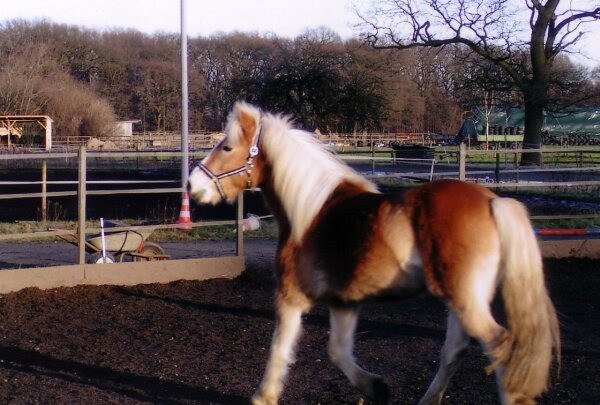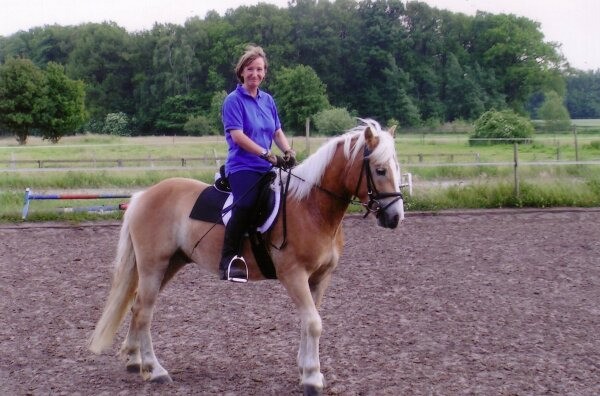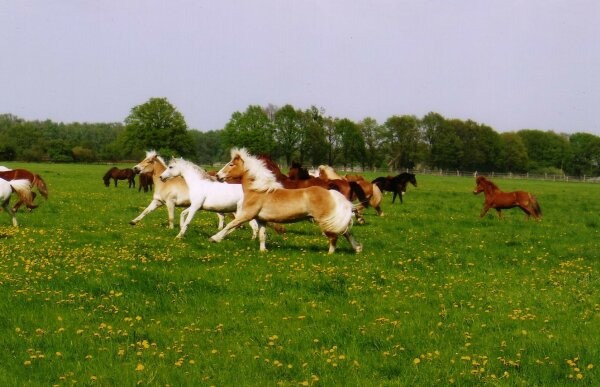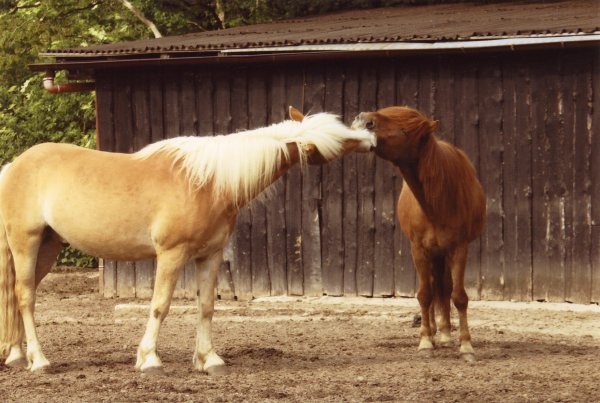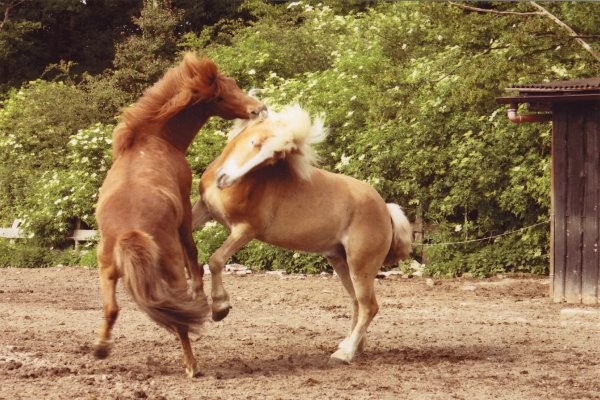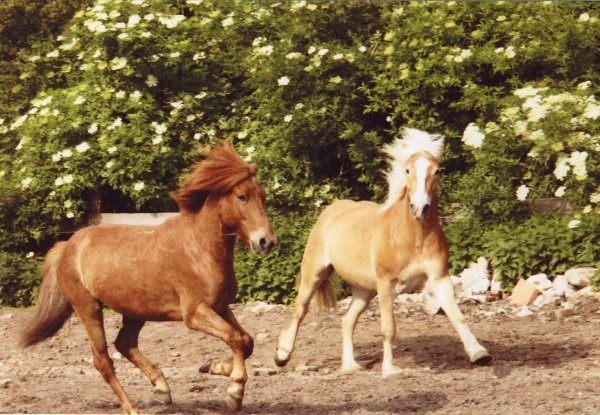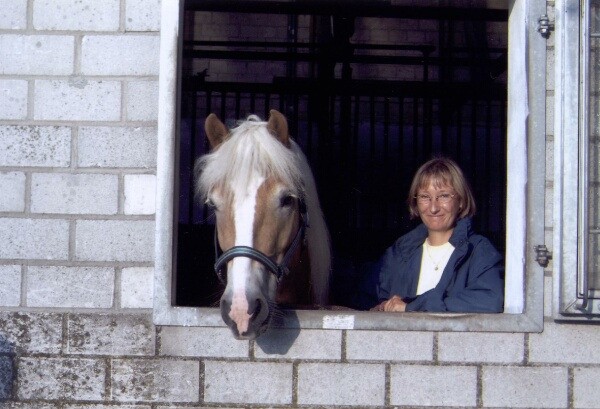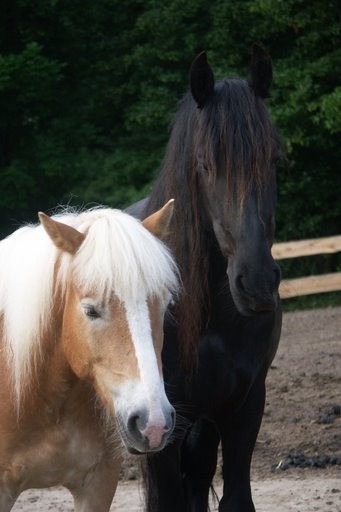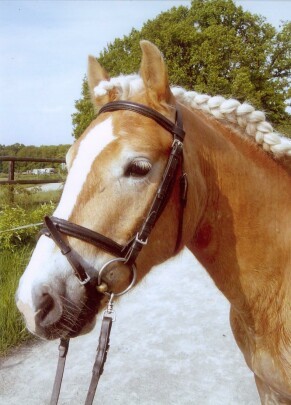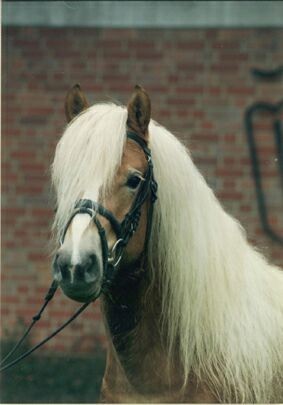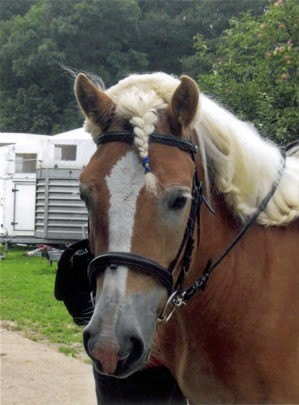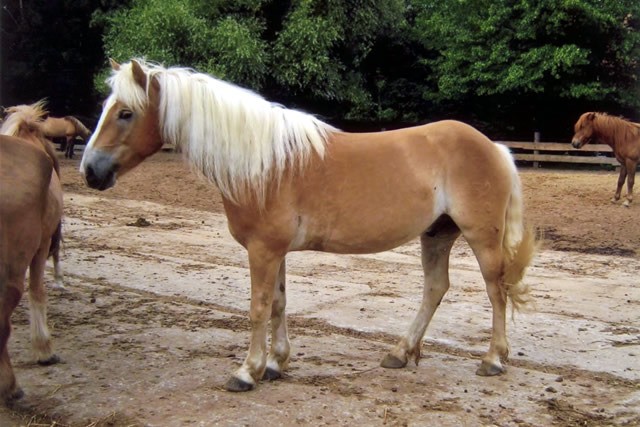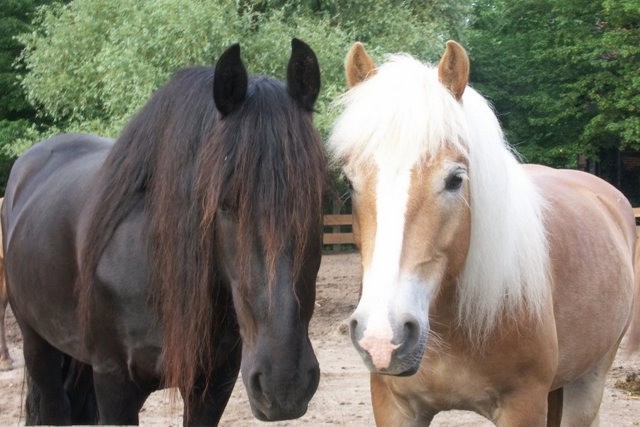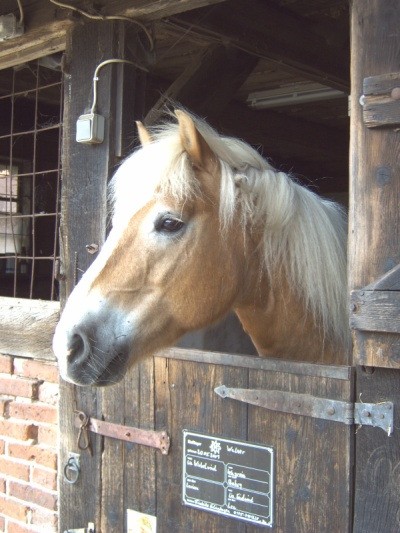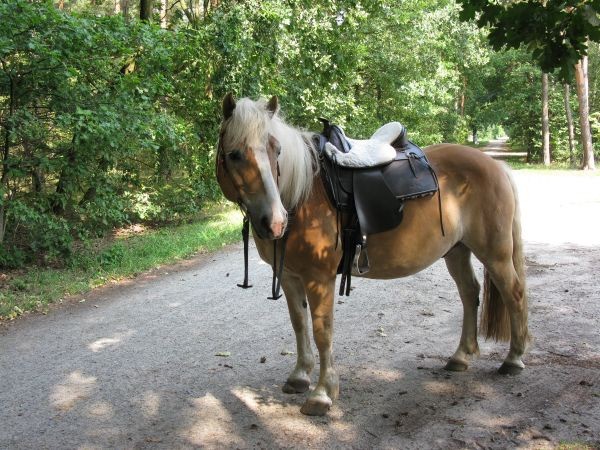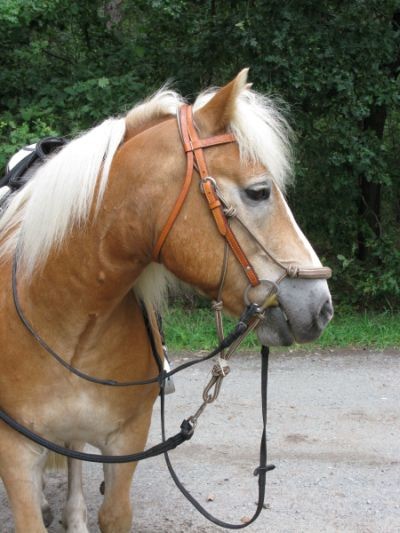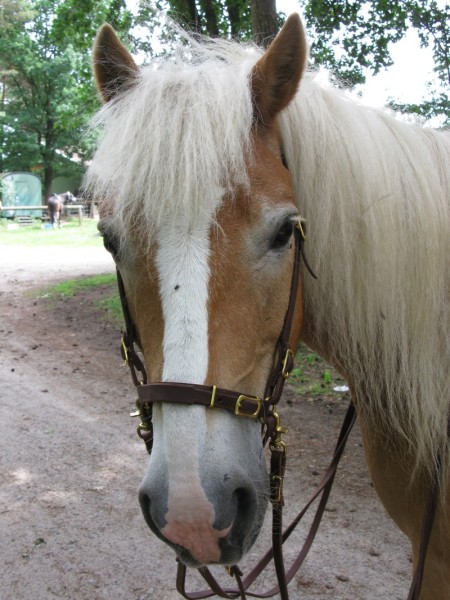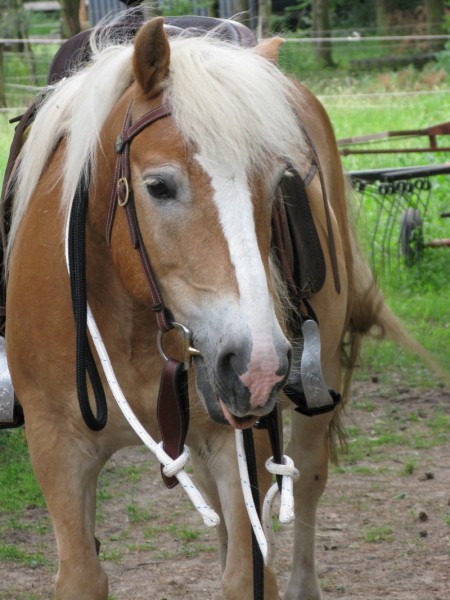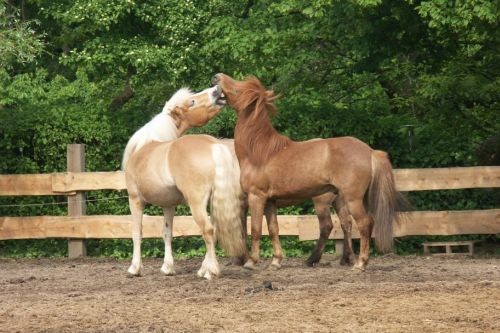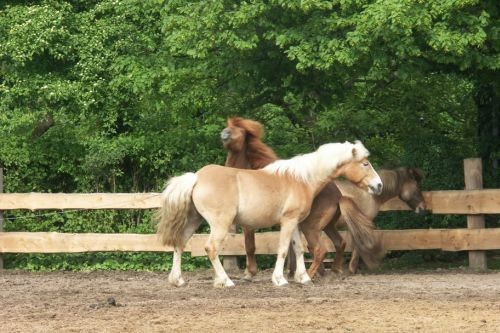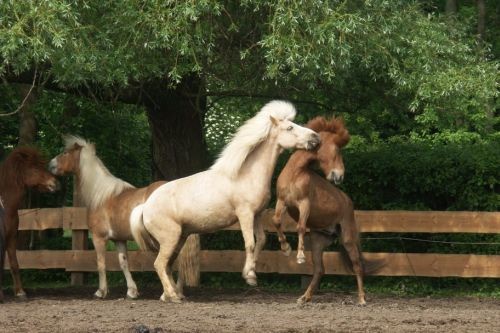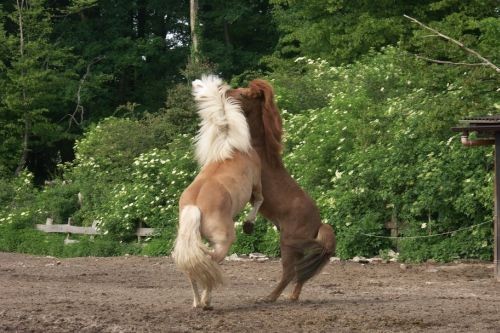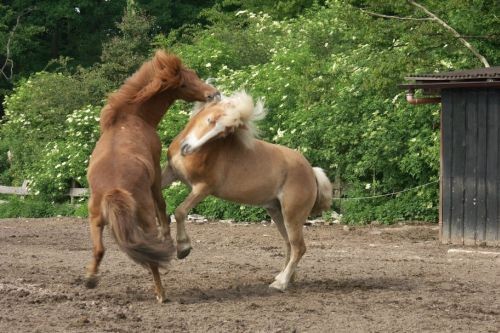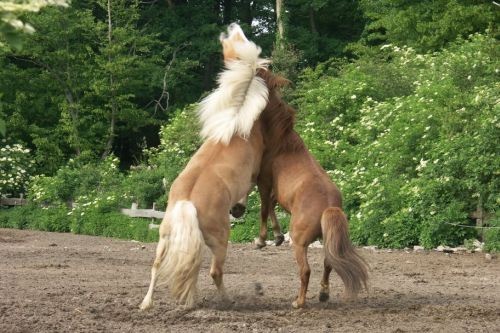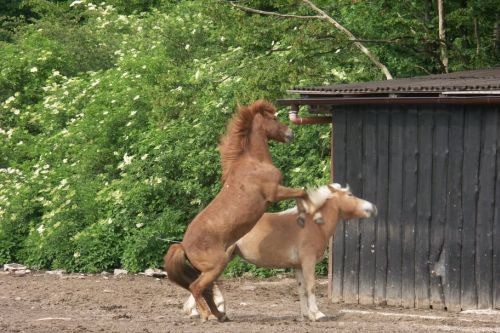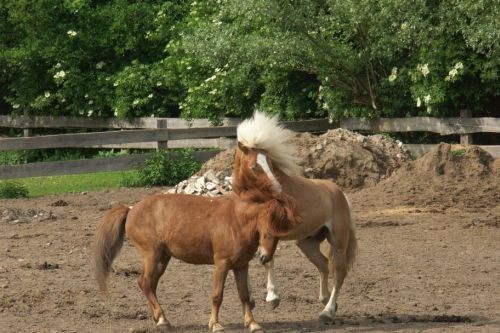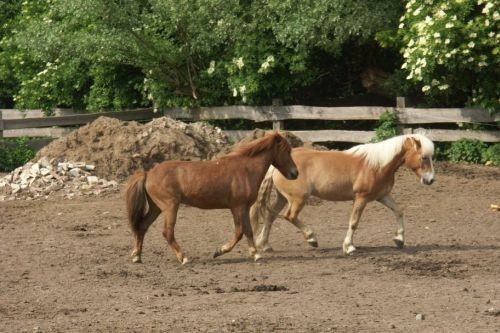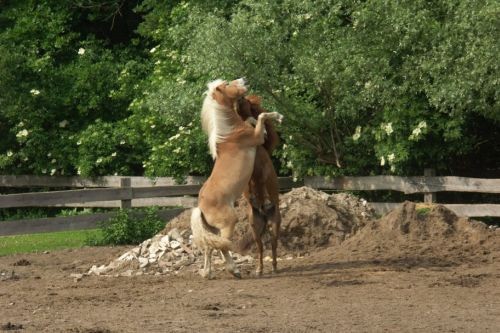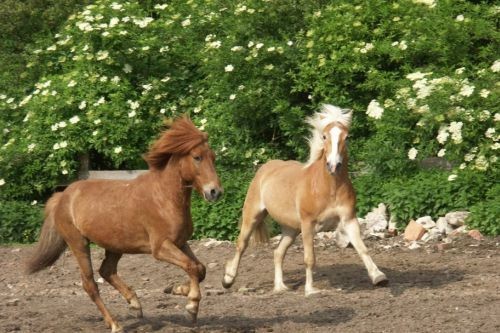At home
This Web Site I dedicate my Haflinger horse Walzer (*in May 2001, F: liz. Wirbelwind from Wagrein - Babsy, M: Larissa from liz. Südwind - Lea). Breeder: W. Kreikenbohm, Padenstedt, Germany. For more informations about Haflinger see below.
















Since 2014 switch to signal and western riding





Videos:
First grazing in spring 2005
First grazing in spring 2005
Have fun in the years 2016/17
Training 2018
More pictures in spring 2007
















The Haflinger
(Text source: Citing American Haflinger Registry, www.haflingerhorse.com)
History
The history of the Haflinger horse can be traced to medieval times when writings told of an Oriental race of horse found in the Southern Tyrolean Mountains of present day Austria and Italy. Many of the villages and farms in the Tyrol were accessible only by narrow paths requiring agile and surefooted horses for transportation and packing. Artwork from the region from the early 1800’s depict a small noble chestnut horse with packs and riders traversing steep mountain trails.
The first official documentation of the present day Haflinger (named for the Tyrolean village of Hafling) was in 1874 when the foundation stallion 249 Folie was born of the half-Arab stallion 133 El’Bedavi XXII crossed with a refined native Tyrolean mare. All modern purebred Haflingers must trace their ancestry directly to Folie through seven different stallion lines: A, B, M, N, S, ST, and W.
During the years of World War II, there was a significant shift in breeding practices, as pack horses were needed by the military and a shorter draftier Haflinger fit the bill. Postwar, the height and refinement of the breed has returned, with an emphasis on developing a small horse that is versatile for both riding and driving, with a strong constitution, a solid conformation with substantial bone, and an uncomplicated personality.
The specialness of the Haflinger lies, of course, in its unique golden chestnut coloring with the long flowing white mane and tail. But more unique is the people-loving, willing and forgiving temperament that was established over centuries of living alongside and working with the mountain peasants, serving all purposes for all family members. Haflingers very simply became part of the family.
The modern Haflinger is now found over the world, active in such varied uses as draft work, paching, light harness and combined driving, western and trail riding, endurance riding, dressage and jumping, therapeutic riding programs. Haflingers hold their own competition with other breeds, often showing athleticism and strength for their size.
Haflingers are being discovered by the horse loving public who want an equine companion that is safe, versatile, dependable and beautiful. The Haflinger horse captures hearts and enriches lives, as it has for centuries.
Some characteristics
Appearance and colour:
Chestnut colour in all shades from light to dark with light coloured manes and tails.
Height:
Between 54 to 60 inches (about 135 – 150 cm).
Type:
The horse’s appearance is elegant and harmonious, with a refined and expressive head with large eyes, the nostrils are large and wide. The horse should be well muscled and show correct, clean limbs with well formed defined joints.

